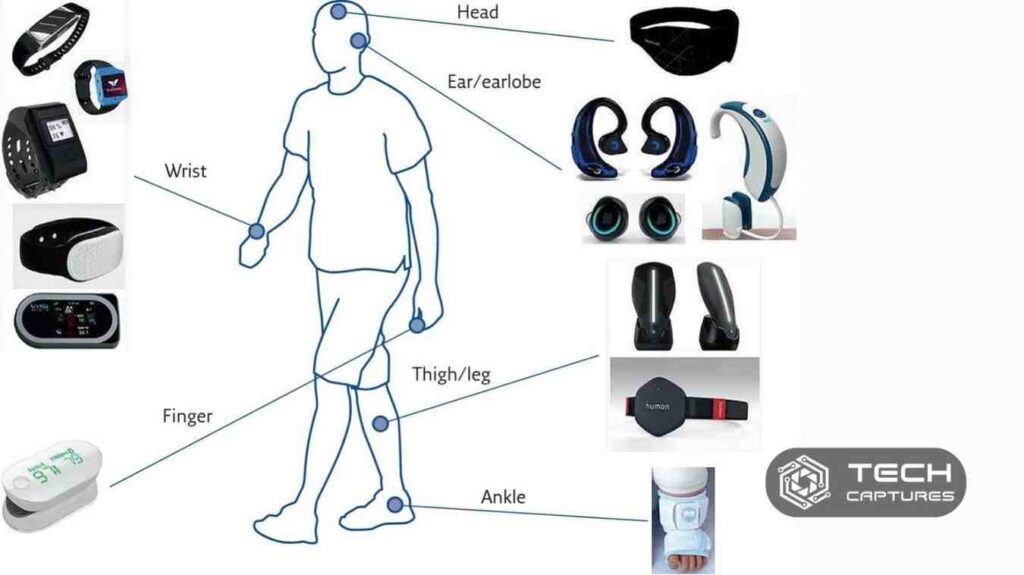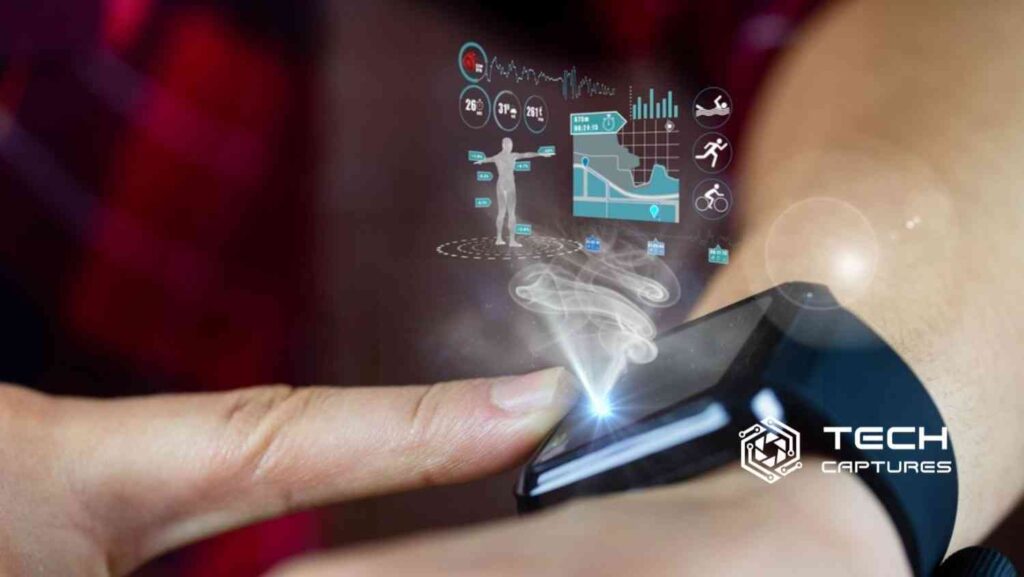Which option describes wearable technology? Well, it’s not just about things you wear; it’s much more! Wearable tech includes various devices that you can wear, but it’s not just a simple accessory. Let’s explore and find out why wearable technology is more than just something you put on.
Table of Contents
What is Wearable Technology?
The incorporation of technology into objects we use regularly best describes wearable technology. These are not your ordinary accessories; they are smart electronic devices fused into our apparel or worn on our bodies as inserts or accessories. Picture jewelry, medical devices, or even elements of clothing that go beyond mere aesthetics.
Which Option Describes Wearable Technology? Wearable Technology Types

- Smart Jewelry and Accessories: Rings, wristbands, and watches that do more than adorn. They often work hand in hand with smartphone apps.
- Body-Mounted Sensors: These tiny wonders monitor and transmit biological data, contributing to advancements in healthcare.
- Fitness Trackers: From wristbands to headbands, these track physical activity and vital signs, wirelessly connecting to apps.
- Smart Clothing: Attire with built-in tech, offering features like fitness monitoring, interaction with other devices, and adaptive fabric characteristics.
- Augmented Reality (AR) Headsets: Merging digital info into the real world, these headsets provide an interactive blend of reality and virtual realms.
- Virtual Reality (VR) Headsets: Immersing users in a wholly digital environment, these headsets redefine the user experience.
- AI Hearing Aids and Virtual Assistants: Devices enhancing hearing capabilities or serving as virtual aides, making life more convenient.
How Wearable Technology Works
Modern wearables, spanning smartwatches to VR headsets, operate based on their specific category—be it health, fitness, or entertainment. Microprocessors, batteries, and internet connectivity are the backbone, ensuring data collected can sync seamlessly with other devices. Embedded sensors, whether on the body or in clothing, keep tabs on movements, provide biometric identification, and aid in location tracking. From activity trackers on wrists to smart tags remotely tracking user movements, wearables are all about real-time data monitoring.
Which Option Describes Wearable Technology? Applications of Wearable Technology
Wearable technology has transcended the realm of consumer electronics. While smartwatches and fitness trackers steal the spotlight, these innovative gadgets have found their way into various scenarios:
- Healthcare: Wearables are revolutionizing healthcare, with body-mounted sensors providing valuable data for medical purposes.
- Navigation Systems: From smart glasses to wearables assisting in navigation, these devices are changing the way we find our way.
- Consumer Goods: Everyday items are becoming smarter, thanks to wearables. The integration of technology enhances the utility of common goods.
- Professional Sports: Athletes utilize wearables to monitor performance, track vital signs, and optimize training routines.
- Advanced Textiles: The marriage of wearable technology with textiles opens avenues for clothing that does more than cover. Imagine fabrics adapting to your preferences or environment.
The Evolution: History of Wearable Technology

To understand where wearable technology is headed, we must glance back at its intriguing history:
- 1960s: The birth of wearable tech, a four-button computer aiding gamblers, fitting into shoes or strapped around waists.
- 1970s: The calculator wristwatch emerges as a fashion statement, marking the era where wearable tech gained popularity.
- 1980s: Sony’s Walkman and digital hearing aids transform the landscape of wearable technology.
- 1990s: The advent of the wearable wireless webcam and the rise of smart clothing expos and tech conferences.
- 2000s: A surge in wearable tech with Bluetooth headsets, Fitbits, and the Nike plus iPod Sport Kit.
- 2010s: The tipping point with Google Glass, Apple Watch, and the Oculus Rift Headset.
- 2020s: The gaming industry continues to innovate, and smart clothing edges closer to mainstream adoption.
The Future: Which Option Describes Wearable Technology?
Wearable technology is not just a fad; it’s shaping the future. Beyond the familiar fitness trackers and AR headsets, here’s a glimpse into what the future holds:
- Apple Glasses: Expected to hit the market in 2023, these AR smart glasses synchronize with iPhones to display texts, emails, games, and more.
- Energy Harvesting: Research in energy harvesting aims to eliminate the need for regular charging by converting body heat, movement, or solar energy into power.
- Smart Contact Lenses: Tech giants are developing soft electronic smart contact lenses, providing real-time information and vision correction.
- AI for the Human Brain: Non-invasive sensors integrated with AI, enabling functions associated with thinking. Imagine typing Facebook updates using your mind!
Exploring Key Concepts: Connectivity and Advantages
- What term describes a technology that allows devices to connect?
- The technology-enabling device connection is commonly known as the Internet of Things (IoT). Wearable technology plays a crucial role in this interconnected web, facilitating seamless communication between devices.
- What is the advantage of wearable technology?
- Wearable technology offers a myriad of advantages, from health monitoring and fitness tracking to enhanced convenience and real-time data access. It seamlessly integrates into daily life, providing valuable insights and functionalities right at your fingertips.
Which option describes wearable technology? In Conclusion
In conclusion, wearable technology isn’t just a trend; it’s a transformative force. From its humble beginnings in the 1960s to the futuristic promises of AI-integrated contact lenses, wearables are making life smarter, more connected, and undoubtedly exciting. Stay tuned as we witness the ongoing evolution of these ingenious gadgets, set to redefine how we interact with technology on a daily basis.

